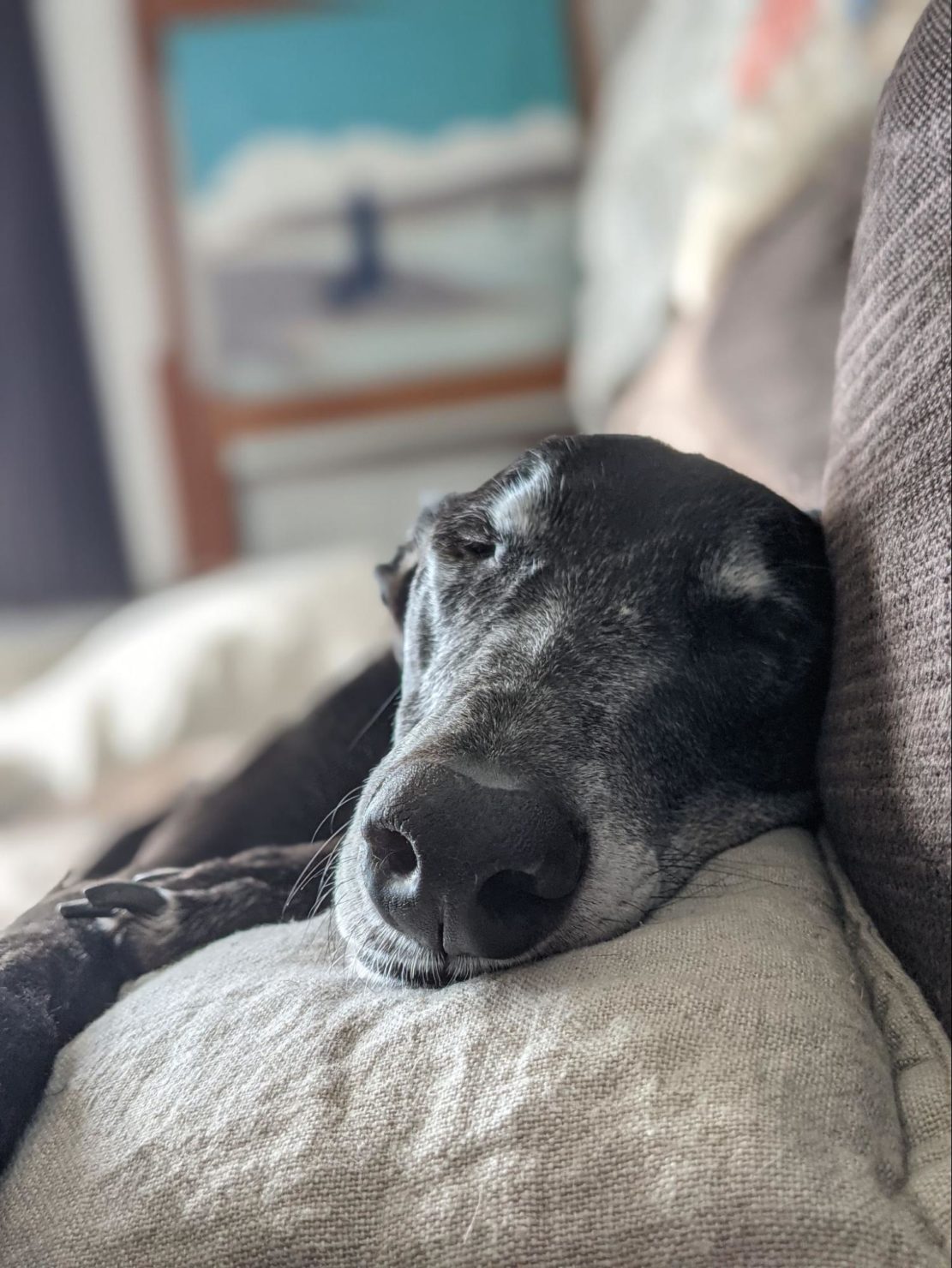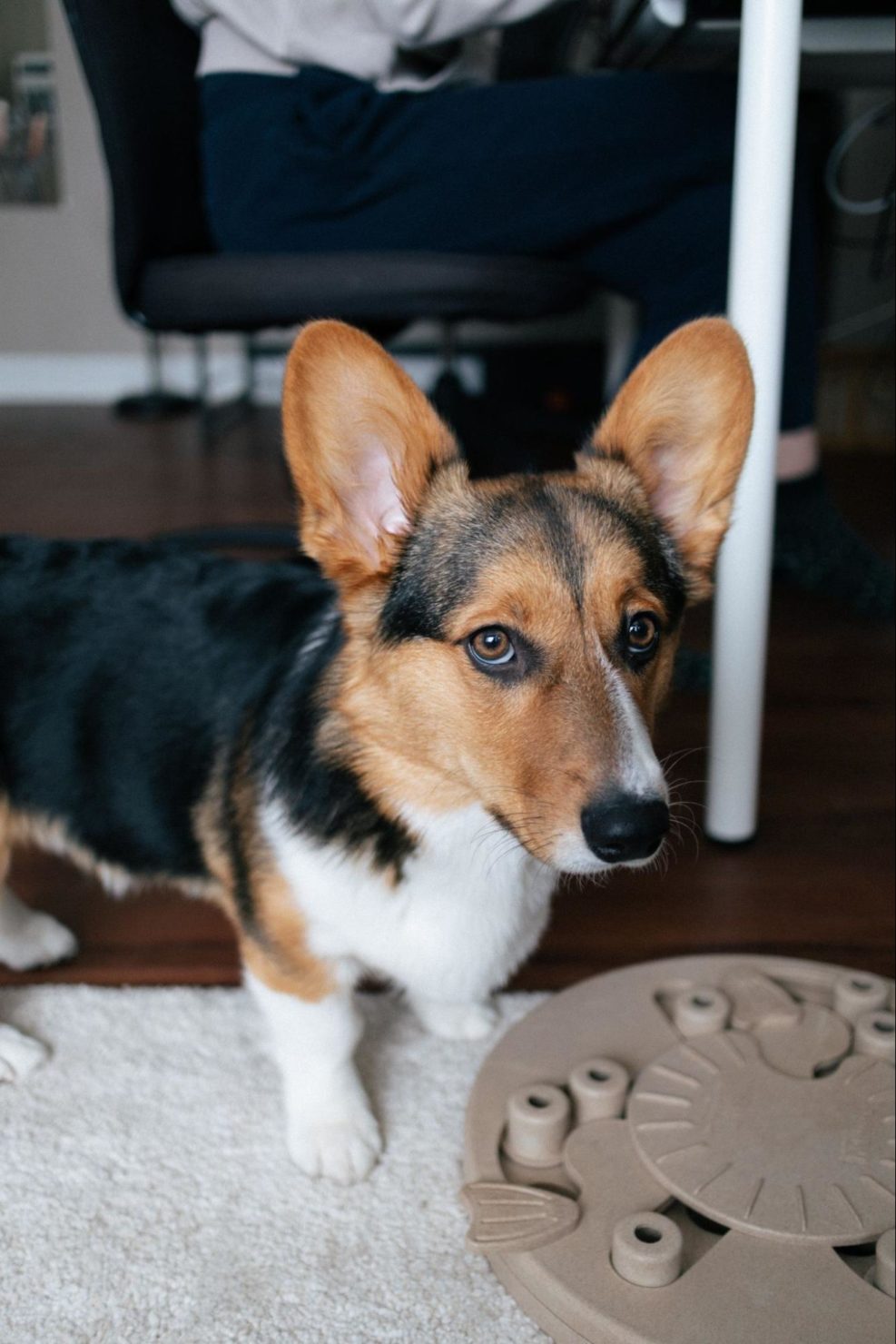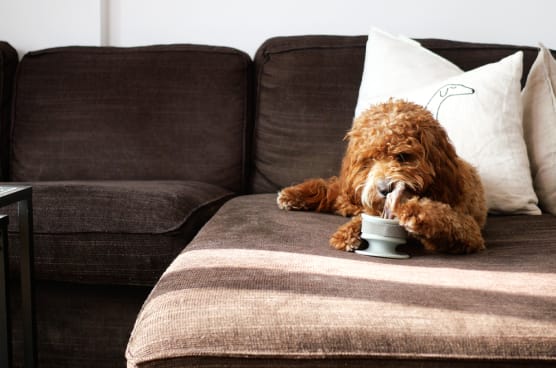This is a guest post by Adrian Lim. He’s the creator of CHEWDEN, a dog treat holder that make chews and frozen treats safer, mess-free, and more interactive.
I adopted my dog Oji in 2019, and he changed my life. Because of him, I’ve started a business designing products for dogs and couldn’t be happier doing so. He is a retired racing greyhound. You can read a short post about him and interesting facts you may not know about greyhounds and their racing industry here.
Back then, I still had a job in the city. And although Oji was generally a low maintenance dog (he slept about 20 hours a day), I often researched and tried various ways to help him lead an enriching and happy retired life, especially when he was home alone.
When the pandemic hit and the whole world switched to working from home, my focus moved from distracting him while I was away, towards keeping him occupied so he wouldn’t be making unwanted ‘guest appearances’ in my conference calls whilst begging for attention.
It’s safe to say that I’ve done a fair bit of digging into this area, but I’m no dog expert by any means. That’s why I’ve asked Sarah Beilfuss, a certificated dog training instructor and behaviorist, to lean in and lend us her expertise on this topic.

It’s unfortunate that many people are already struggling to cope with a post-pandemic routine with their lockdown puppies. Whether you’ve just got a dog that has become very used to company all the time or a lockdown puppy that now has to deal with a re-opening up world, here are some things you can consider adding to your arsenal:
Teaching your dog to settle

SARAH: “Puppies need a staggering 20 hours of sleep a day. Adult dogs are not far behind with 15-18 hours a day. Most dogs I see don’t get anywhere near enough sleep; they never learned how to settle. We have to remember that most dogs, if given the choice, are highly likely to follow you around and make sure they don’t miss any of the fun stuff. Overtired dogs, however, are not the best behaved ones.”
ADRIAN: “That’s an interesting insight! Most owners I know do quite the opposite and aim to tire their dogs out with activities non-stop which can be a great strategy if they know how to settle. But what I often see is a recharged hyper-dog after a 20 second rest. What really helped Oji to settle in the home was when I paid attention to where he could feel safe – buried behind barricades of cushions!”
SARAH: “Absolutely, knowing what works for your dog is important. Most dogs don’t come with an off-switch; they need to be taught how to settle. My own rescue dog was almost incapable of being still for more than a second. I used chews to keep her busy with a calming activity to teach her to be calm at home, settle nicely and even accept being left alone.”
Recreational chewing and licking

ADRIAN: “Chewing and licking is my personal favourite. Maybe it’s because of how therapeutic watching it is! Good dog chews are also great for their dental health!”
SARAH: “This is my personal favourite too. Chewing is a calming activity for the dog which helps the dog to learn how to settle. But, If your dog is a strong chewer or very greedy, there is a risk it may swallow large chunks. This is why I was impressed with the design of CHEWDEN, as it keeps hold of that last little bit most dogs would swallow in a flash.”
ADRIAN: “It’s what’s inspired me to create CHEWDEN – to make this wholesome and underrated activity safer, longer lasting, and as a bonus mess-free, so dog parents are more likely to regularly provide this as an activity for dogs.”
Nose-work, snuffle mats and food puzzles

ADRIAN: “I’ve seen lots of owners try out products that can ‘hide’ treats and get dogs to work for their food. Some simply place food around the home for their dogs to find. It seemed like it could keep your dog mentally stimulated at home.”
SARAH: “Yes, this is definitely on the uptrend, which does concern me as they can encourage dogs to scavenge outside. As the dog’s nose is so good, the actual challenge is getting the treats out of the toy. Depending on the dog, this can be quite frustrating or overly exciting.”
ADRIAN: “Didn’t think of that! Would they possibly know to associate ‘scavenging’ with a certain environment such as in the home and with certain puzzle toys perhaps?”
SARAH: “It is possible to teach a dog that looking for food is only permitted with a particular puzzle toy or if cued to a command. However, it can be risky, and you have to be willing to put in a lot of work. Conversely, I don’t think scattering food in the home or outside to play a game of “find it” is ever a good idea.”
In closing
We’ve just covered three activities you can consider to keep your dog engaged in a world that is slowly returning to a new normal. Of course, there are other options we haven’t explored, such as trading walks with fellow dog-loving neighbours and discovering new local places to explore.
If you opt to adopt chewing and licking into your dog’s enrichment activities, consider supporting CHEWDEN’s Indiegogo campaign to be the first to make these amazing activities for your dog safer, cleaner, and more interactive.




